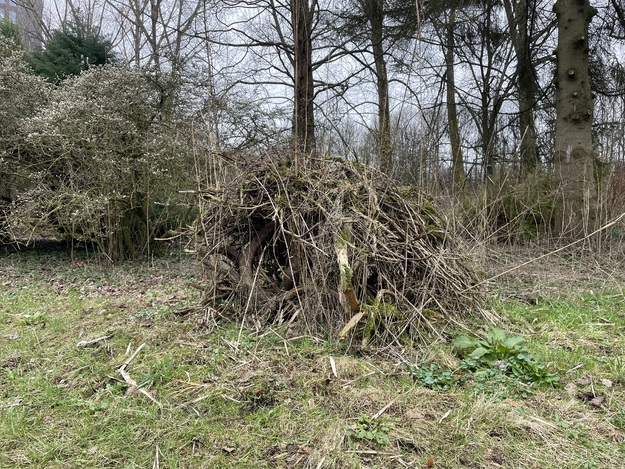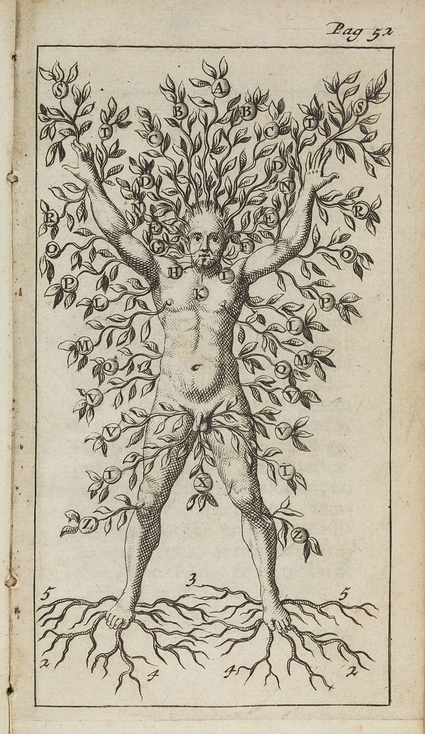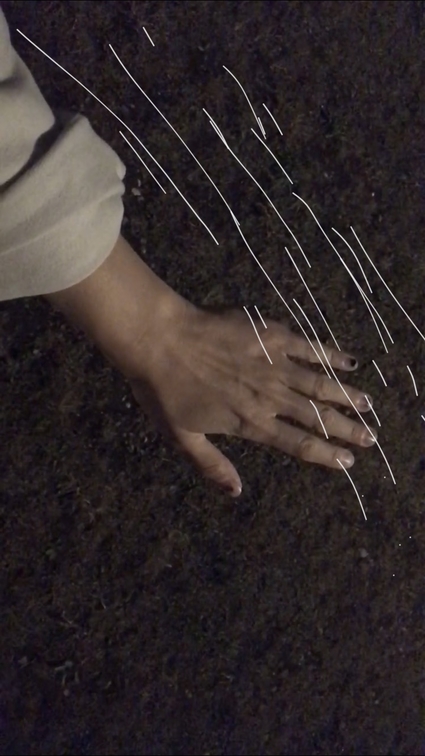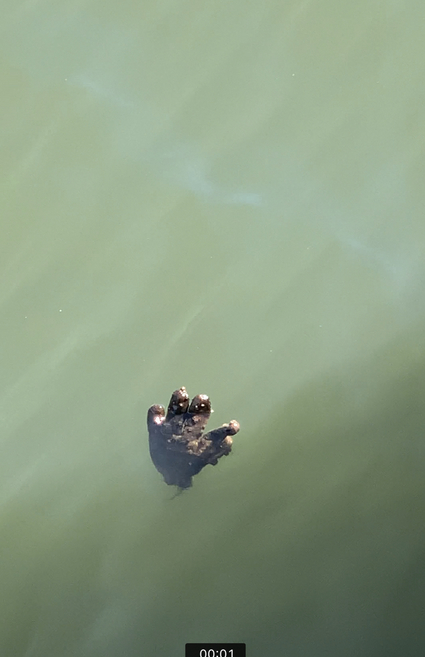Project description
Matters of life (n)or death?
Ever since I first heard about humusation I have felt a deep longing to understand 'what it would be like' to decompose and how I can find ways to relate - with my body - to the complexities and mysteries of the non/living world.
Within this public research trajectory I propose to choreograph 6 sessions that will allow me, 4 others and 1 expert to engage with these questions in an informal setting. Part lecture, part conversation, part embodiment, these gatherings will build on and bring together my current research into necro-ecology and haptonomy and thus form the foundation for a better understanding on the phenomenology from-life-to-death.
The aim of these exchanges is gather and combine new insights and collectively build a necro-ecological repository of relations, words, meanings and imaginaries. In doing so I hope to better understand the meaning and role of dying in the context of a living world.
Why Haptonomy?
It is precisely within my Haptonomy study (The teaching of relationally and the phenomenology of touch and 'being in contact') that I encountered new ways of relating to myself, my body and other human beings. Within this therapeutic practice you use various exercises, where you play with proximity and distance as wel as attunement, touch and reflection, and learn - through working with others - 'what it is like for you, to be in contact with both yourself ánd the other, in the here-and-now'.
The majority of these exercises are funded on 6 haptonomic phenomena which go by the acronym G.R.O.U.N.D. And while within haptonomy they are ment to uncover 'how things feel' - I foresee they can also be fruitful lenses with which to look at our procedural worlds of living and dying. Furthermore I am also curious as to whether these exercises can also be transferred to human to more-than-human relationships and even the non/living world.
That is why the 6 gatherings will be structured along these same principles and phenomena. As such, the research wil itself become of cyclical nature. Where we use haptonomy to better understand necro-ecology, and the engagement with necro-ecological relations can in potential also enrich the field of haptonomy
GROUND
G - (Grenzen) - Boundaries
R - (Ruimte) - Space
O - (Openen en sluiten) - Opening and closing
U - (Uitnodigen) - Inviting
N - (Naderen) - Approaching
D - (Doorvoelen) - ‘Extending touch and feeling through’
What we will do
Starting from the hypothetical premise of one decomposing human body we will slowly move from life-to-death and creep, leak and flow through all its encompassing material, temporal, microbial and eco-philosophical layers, entanglements and orifices.
Making use of the same score each session will be preceded with sharing circle, where we will listen and share - using conversation starter cards on human | more-than-human | non/living relating. Then we will exchange with the practice and insights from an expert from the field of taphonomy, death-care, gardening, medicine, ecology, microbiology, ecosystem dynamics and ageing followed by an haptonomic exercise that will allow participants to engage with each other and explore the topics addressed in an embodied way. We will conclude using methods such as trance writing and speculative drawing to co-fabulate and summarise our collective understanding of the session. A accumulation of feelings, memories, subjectivities, engrams and knowledge. And of course each session will draw on the body of works from the ones that came before.
By the end of the 6 sessions we will have co-created the first iteration of a Necro-Ecological repository of relating.
SCORE
- The artist will organise 6 sessions
- For each session 1 expert will be invited
- Each session will be held in an intimate group-of-some with a maximum of 6 participants including the artist and one expert
- In each session we will read, experience, listen, (un)make, respond, collect.
- Each session will be concluded with the adding of existing or new imaginary words, meanings and mentioning to the artists Necro-ecology repository.
SESSIONS
1. Boundaries - ‘When’ is non/living?
2. Space - Bloating, particles, moving
3. Opening & Closing - Orifices
4. Inviting- Microbes, succesion, death as a collaborative act
5. Approaching - Ageing
6. ‘Doorvoelen’ - ‘Becoming soil’
What is Haptotherapy?
Haptonomy concerns the phenomena of touch and being-in-contact-with. Developed by Dutch physiotherapist Frans Veltman, this therapeutic practice draws on Merleu Ponty’s phenomenology to ‘describe’ - but more importantly ‘make experiential’ - the embodied sensations as they can be experienced by humans in human-to-human encounters.
In his work ‘Levenslust en Levenskunst’ Veltman introduces the hapsis as being fundamental to our ‘making sense of the world’. And as such the practice uses the body, sensing and touch as the most important vehicles to support clients who have falen out of touch with their own bodily and emotional existence. Often working with clients who struggle issues relating to burn-out, autonomy, intimacy, identity, self-image and vitality.
While on track to become a haptotherapist myself I have, for the following year ’22-’23 decided to take a ‘break’ from this formal line of study and thus enlisted for the year long program: ‘haptonomic professional’ - which takes your existing profession and workfields at heart. In doing so I will take the opportunity this year to engage with the program as ‘residency’ and consider the various ways in which the haptonomic phenomena* (see above) can be brought into practice through creative methods, while being situated in various ‘natural’ environments. With the aim of this studyyear to explore what would happen if we extend the working with these phenomena from human-to-more-than-human encounters.
What do you mean with necro-ecology?
I use the term necro-ecology to describe all things related to the ecology of death and the role of decay in ecology. In a more 'technical' term, I prefer to use it to describe the relation between decaying of diseased (other-than) human remains and the biochemical environment. These degradation processes and exchanges of non/living matter provide interesting liminal spaces upon which to reflect though making, embodiment, conversation and play. I've been using this framing as a carier bag for my artistic research into humusation - the composting of human remains (also called humane composting or organic reducation). For more on humusation please visit: www.dehumusator.org
Additional information
Bio Rosalie Bak
Rosalie Bak is an art-informed haptonomic mediator, necro-ecological explorer, educator en designer of interactions. Working with an audience of zero, one, to some, she views the body as the sole witness and capsule of these encounters. Sometimes her efforts will leave traces and residues.
Within her practice she uses methods such as erasure, assemblage, inquiry, scores, trance writing and associative drawing to investigate the ambiguity of (her) personal experiences and the relationship between the human, weather, micro-organisms, death and ecology. In doing so I views the ‘collage’ as a theme, enabling me to bring forth and include all entanglements, both in the physical realm as in terms of concepts and ideas. Her current work is mainly experiential and collaborative in nature, working with the walk as a way of mapping and exploring the field of Necro-ecology and Haptoherapy as a deepening paradigm within her artistic research.
Possible and preferred ways to expand on this project
+ Fieldwork and visits
+ Working with dancers, movers, composers to rework the nerco-ecology repository into a performative encounter
Budget required for proposal (excluding extensions)
Per session +/- 850,- | when as full program 5500,- (including honorarium extra end presentation, excl. invited guests of the end presentation) >> Budget compromised of: honorarium artist - 450,- ex btw (4 hr preparation + 3 hr hosting + 2 hr reflection per sessie *) + Compensation +travel expansions expert - 250,- + Materiaal costs. - 150,-
* To be discussed: 1 to 2 alinea reflections can be published on mediamatic website
Costs based on the premise that the Mediamatic's location can be used. Additional means for reporting (photo, video) to be discussed. Ideally this will take part over the summer months, with the sessions being 2 weeks apart.



